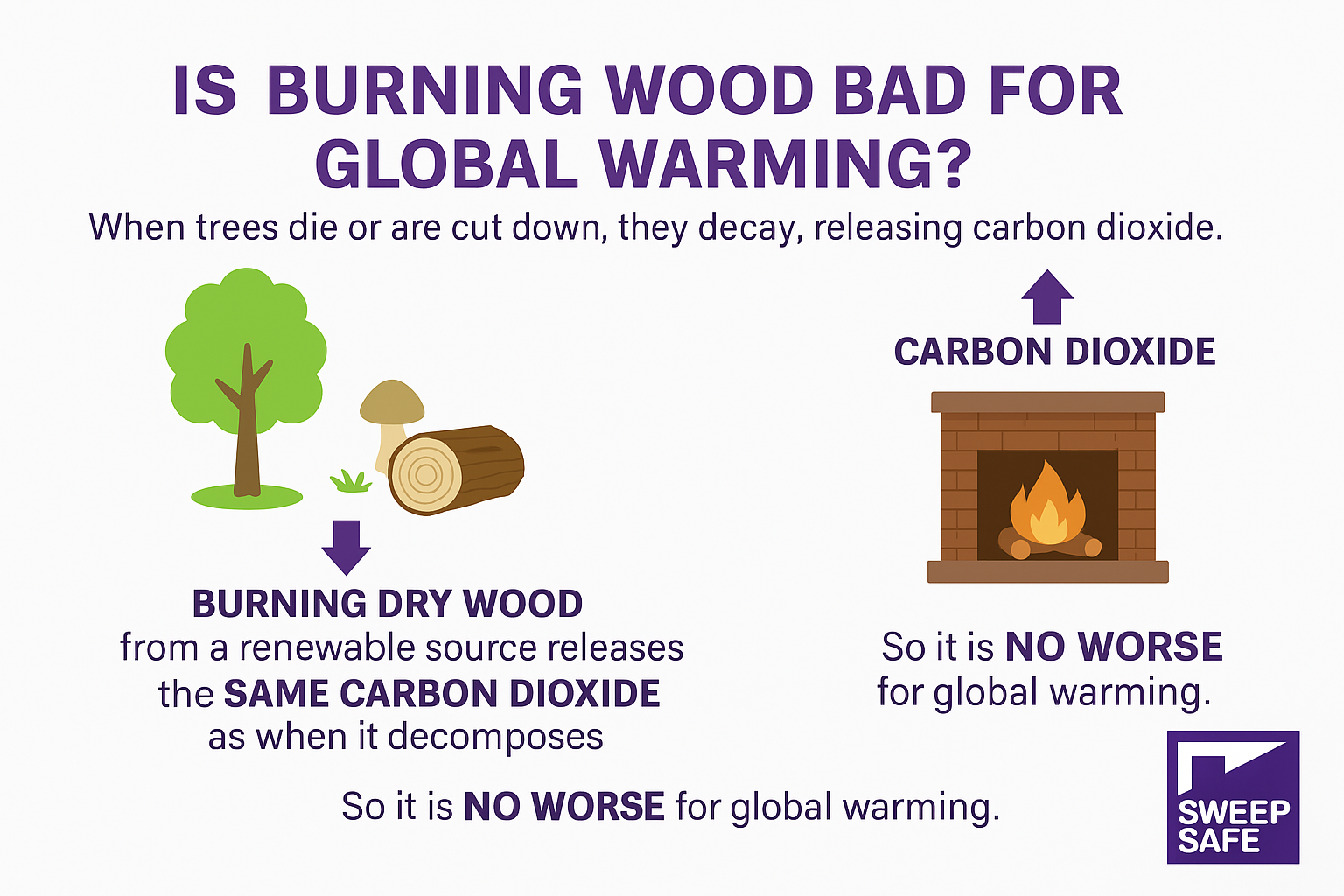
Why Oil and Coal No Longer Form — And What Modern Wood Users Need to Know
By Daniel Hodgson
When we talk about heating our homes safely and responsibly, it helps to understand the bigger picture behind the fuels we use. Oil and coal powered the industrial world, yet the conditions that created them no longer exist. And interestingly, whether wood is burned in a stove or slowly broken down by fungi in the forest, carbon monoxide is always part of the story.
Here’s the science explained simply.
A World Before Dinosaurs: How Fossil Fuels Were Born
If we travel back 360–300 million years, during a time called the Carboniferous period, Earth looked very different. Giant swamp forests dominated the landscape—huge ferns, early trees, and towering clubmosses.
When these plants died, they fell into oxygen-poor wetlands. Back then, fungi had not yet evolved the ability to break down lignin, the tough compound that makes wood woody. Without natural decay, dead vegetation piled up faster than it could rot.
Over millions of years, these thick layers of plant matter were buried deeper and deeper. Pressure and heat slowly transformed them into:
- Coal
- Oil
- Natural Gas
These fuels formed long before dinosaurs walked the Earth.
Why Oil and Coal Don’t Form Anymore
Around 290 million years ago, fungi evolved the enzymes needed to break down lignin. This was a game-changer for Earth’s carbon cycle.
Today, when a branch falls or a tree dies, fungi and microbes colonise it quickly. The wood is decomposed long before it can ever:
- Be buried deep
- Be compressed
- Be heated enough to form new coal or oil
Because decay happens so efficiently now, the geological process that created fossil fuels effectively stopped. Modern forests do not become future coal seams or oil fields. The world has changed too much.
What This Means for Wood Users Today
Whether wood is:
- Burned in a stove
- Rotting naturally on the forest floor
- Eaten by fungus
…it releases carbon back into the atmosphere. That includes carbon monoxide (CO) as part of the breakdown process.
:
When wood burns in a controlled appliance—especially when properly seasoned and used with a well-maintained chimney system—we have control over the combustion process.
When wood rots naturally, emissions are slow and harmlessly dispersed outdoors.
Why Good Practice Still Matters
Burning wet or unseasoned wood creates more smoke, more creosote, and more carbon monoxide. For homeowners, this increases:
- The risk of chimney fires
- The risk of dangerous CO build-up
- The rate at which deposits form inside the flue
This is exactly why Sweep Safe emphasises:
- Using dry, seasoned wood
- Ensuring regular chimney sweeping
- Maintaining appliances to manufacturer standards
- Installing and testing carbon monoxide alarms
A clean, well-maintained chimney doesn’t just protect property—it protects lives.
A Final Thought
Oil and coal were created in a world that simply doesn’t exist anymore. Wood, however, is a renewable fuel we can still use safely—if we follow best practice.
Sweep Safe members across the UK work every day to help households burn cleaner, reduce risk, and heat their homes with confidence.
If you burn wood or solid fuel, give your local Sweep Safe professional a call and keep your home safe this season.
